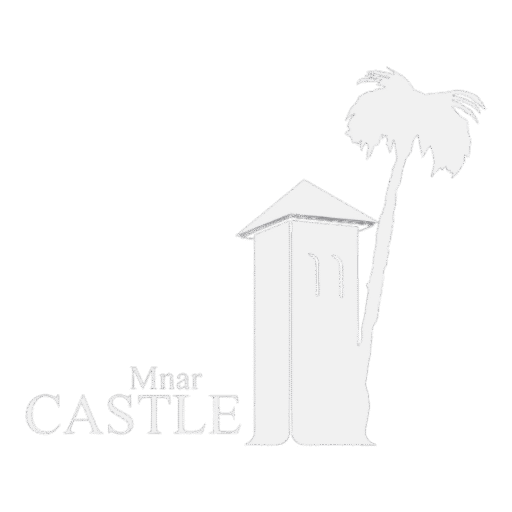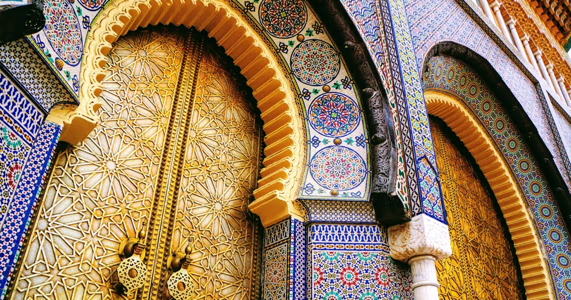Royal Palace Rabat Morocco: A Majestic Landmark for Tourists to Discover
A Glimpse Into Royalty
The Royal Palace Rabat Morocco, also known as Dar al-Makhzen, stands as a symbol of Morocco’s rich heritage and royal traditions. This magnificent landmark serves as the official residence of King Mohammed VI and the administrative heart of the nation’s monarchy. Though the palace itself is not open to the public, its impressive architecture, sprawling gardens, and historic significance make it an essential stop for travelers exploring Rabat.
Surrounded by meticulously maintained courtyards and guarded by the Royal Moroccan Guard, the palace reflects the grandeur and power of Morocco’s ruling dynasty. Visitors are drawn to its ornate gates, traditional Moroccan craftsmanship, and the historical sites nearby, offering an insightful glimpse into the country’s regal past. Whether you are a history enthusiast, an architecture admirer, or a luxury traveler seeking cultural immersion, the Royal Palace of Rabat is a landmark worth experiencing.
Don’t wait! Get the answers you need now by chatting with us on WhatsApp.
1. A Historic Royal Residence Reflecting Moroccan Heritage
The Royal Palace Rabat Morocco was built in 1864 under the reign of Sultan Mohammed IV and has since remained the center of Moroccan political affairs. Unlike many European palaces designed for opulence, the Dar al-Makhzen serves both as a residence and a working government facility, housing key institutions such as the Royal Cabinet and the Prime Minister’s offices.
While the palace’s interior remains off-limits, its exterior showcases traditional Moroccan architecture, featuring intricate zellige tilework, carved cedarwood doors, and Andalusian-style archways. These elements highlight Morocco’s deep artistic traditions, blending Islamic, Moorish, and Andalusian influences. The palace’s design symbolizes both continuity and evolution, reflecting Morocco’s transition from a sultanate to a modern monarchy.
For a deeper historical perspective, visit the Mohammed V Mausoleum, located a short distance from the palace, where former Moroccan kings rest in an architecturally stunning marble chamber.
2. The Architectural Grandeur of the Royal Palace
The Royal Palace Rabat Morocco is a masterpiece of Moroccan craftsmanship. The gold-adorned gates, geometric tile patterns, and elaborate stucco carvings represent the finest elements of Moroccan design. The palace complex is vast, with several structures interconnected by gardens, courtyards, and ceremonial halls.
The outer facade alone is a sight to behold. The grand arched doorways and finely detailed ironwork reflect the Andalusian and Islamic influences that define Moroccan palatial architecture. Visitors can also admire the royal crest and calligraphic inscriptions embedded in the palace walls, signifying the monarchy’s divine legitimacy.
The palace grounds include lush, meticulously maintained gardens, often compared to those of Marrakesh’s palaces. Although access is restricted, the exterior gardens and courtyards offer a serene contrast to the bustling streets of Rabat, making it a peaceful area to appreciate Moroccan landscaping traditions.
3. The Mechouar: Where Royal Ceremonies Take Place
One of the most accessible parts of the Royal Palace Rabat Morocco is the Mechouar, a vast ceremonial square located at the front of the palace. This space is used for royal addresses, military parades, and national celebrations. On special occasions, the square fills with dignitaries and officials as Morocco’s monarch presides over events of national importance.
Even when ceremonies are not taking place, the Mechouar remains a fascinating area to explore. Its expansive layout and architectural symmetry highlight the importance of ceremonial spaces in Moroccan culture. The presence of the Royal Guard, dressed in traditional red and white uniforms, adds to the grandeur, reinforcing the importance of the monarchy in Moroccan life.
If you are lucky, you may witness the changing of the guard, a brief but impressive display of discipline and tradition.
4. Exploring Nearby Cultural and Historical Attractions
While the Royal Palace Rabat Morocco is a key landmark, the surrounding area offers additional attractions that complement your visit.
- Hassan Tower – This 12th-century minaret was meant to be the tallest in the world, but construction stopped after the death of Sultan Yacoub al-Mansour. It remains an architectural marvel.
- Mohammed V Mausoleum – One of Morocco’s most important historical sites, this royal tomb is known for its white marble structure, intricate mosaics, and golden dome.
- Kasbah of the Udayas – A UNESCO-listed fortress with blue-and-white painted alleys, offering breathtaking views of the Atlantic Ocean and the Bou Regreg River.
- Chellah Necropolis – A site of Roman and medieval Islamic ruins, featuring stork-filled gardens, ancient tombs, and remnants of a once-thriving city.
Each of these sites offers a unique perspective on Rabat’s history, from its Roman roots to its Islamic dynasties.
5. Essential Tips for Visiting the Royal Palace Rabat Morocco
Best Time to Visit
The ideal time to visit Rabat and explore its historical sites is during the spring (March–May) and fall (September–November), when temperatures are mild. Summers can be quite hot, while winters are cooler with occasional rain.
How to Get There
- By Car: Hiring a private driver or taking a luxury taxi ensures a comfortable journey.
- By Train: The nearest station, Rabat Ville, connects easily with Casablanca, Fez, and Marrakesh.
- By Foot: If you’re staying in central Rabat, walking allows you to appreciate the city’s architecture and street life.
Photography Guidelines
- Taking photos of the palace gates and Mechouar is allowed, but avoid photographing security personnel or any restricted areas.
- For the best photos, visit in the late afternoon when the golden light enhances the palace’s intricate details.
Luxury Travel Recommendations
For travelers seeking high-end accommodations near the Royal Palace of Rabat, Morocco, consider these options:
- Sofitel Rabat Jardin des Roses – A five-star hotel blending Moroccan elegance with modern luxury, featuring lush gardens and a renowned spa.
- La Tour Hassan Palace – A historic palace-style hotel, offering exquisite Moroccan decor and top-tier service.
After your visit, indulge in Moroccan cuisine at Le Dhow, a fine-dining restaurant on a traditional wooden boat overlooking the Bou Regreg River.
Why You Should Visit the Royal Palace of Rabat
The Royal Palace Rabat Morocco is more than just a royal residence. It is a symbol of Moroccan heritage, power, and architectural beauty. Although entry is restricted, the majestic exterior, rich history, and cultural significance make it an unmissable stop for those exploring the country’s capital.
For travelers seeking a blend of history, culture, and regal grandeur, Rabat’s Royal Palace offers a fascinating insight into Morocco’s enduring monarchy. Whether you are visiting for business, a luxury vacation, or cultural exploration, this landmark provides an authentic glimpse into the nation’s royal traditions.
We’re here to help! Message us on WhatsApp, and a team member will assist you personally.



